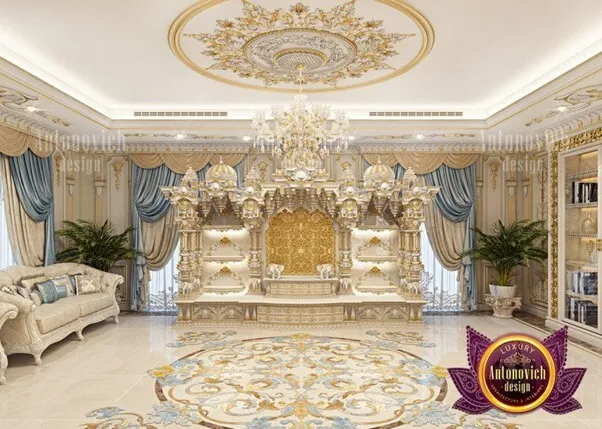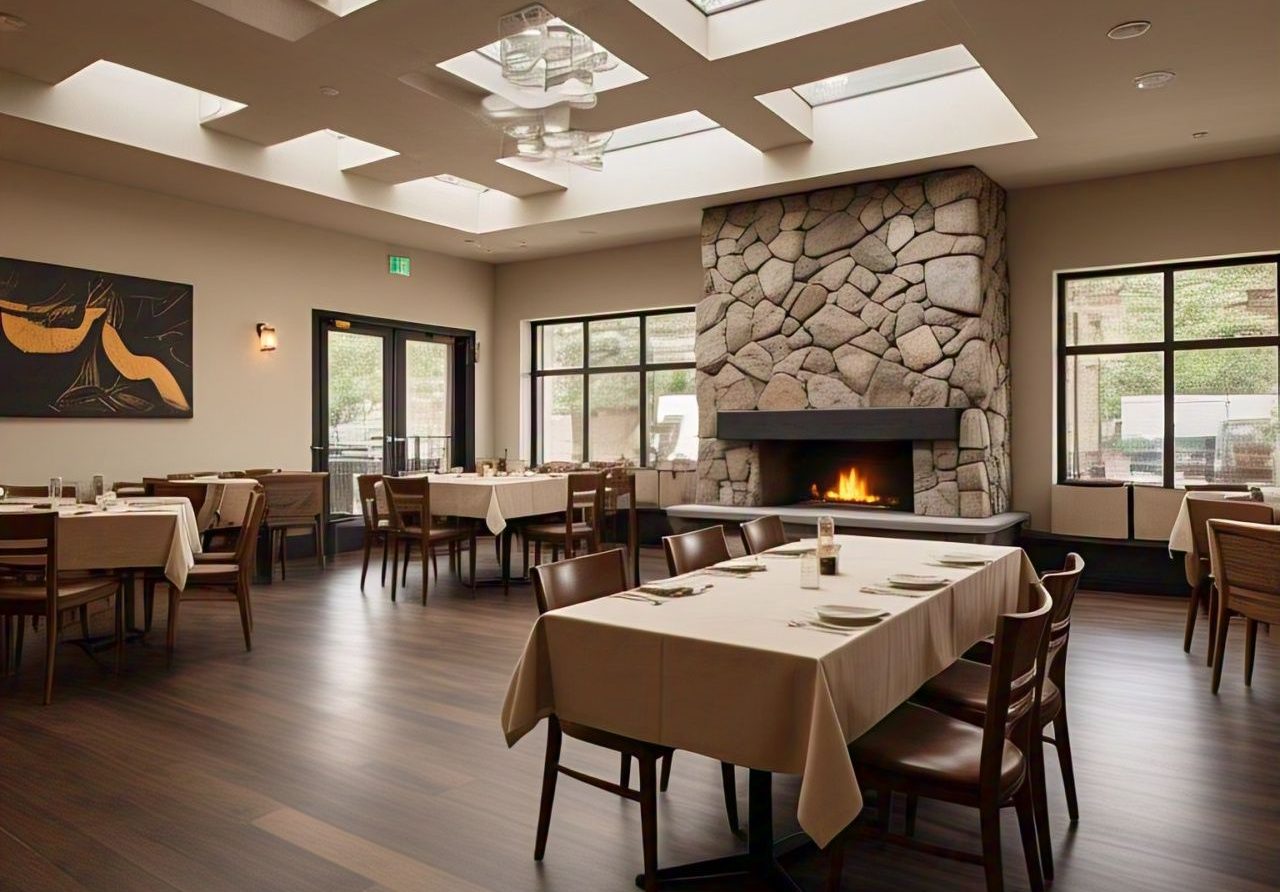The interior of the BAPS Hindu Mandir in Abu Dhabi is a breathtaking symbol of spirituality, cultural unity, and architectural brilliance. As the UAE’s first traditional Hindu stone temple, it marks a milestone in the region’s embrace of diverse religious traditions.
Designed with intricate craftsmanship and inspired by centuries-old Hindu architectural principles, this sacred space is more than a place of worship; it celebrates peace, harmony, and interfaith collaboration.
Every corner of the temple’s interior tells a story of ancient wisdom, divine artistry, and the coming together of global cultures in the heart of Abu Dhabi.
A Blend of Tradition and Innovation
The BAPS Hindu Mandir interior of the Abu Dhabi temple is a stunning blend of ancient tradition and cutting-edge innovation. Rooted in the timeless principles of Hindu architecture, known as Shilpa Shastras, the temple honors the ancient art of sacred design, incorporating precise guidelines for proportions, geometry, and symbolism that date back thousands of years. Yet, while it embraces this rich heritage, the temple also showcases the marvels of modern technology. Advanced techniques like seismic simulations ensure the structure is resilient to natural forces, while digital modeling has allowed artisans to perfect intricate carvings and ornate details with an unprecedented level of precision. This fusion of traditional craftsmanship and futuristic engineering creates a space that is both spiritually profound and structurally groundbreaking, an architectural masterpiece that stands as a testament to the harmony between the old and the new.
Marble Marvel: The Interior Materials
The moment you step into the BAPS Hindu Mandir interior, the shimmering elegance of Italian Aqua Bianca marble instantly captures your attention. This exquisite white and off-white stone isn’t just a feast for the eyes; its soft glow creates a tranquil, almost ethereal atmosphere within the temple, elevating the spiritual experience. Known for its durability, Aqua Bianca marble was carefully chosen not only for its aesthetic appeal but for its longevity, ensuring that the temple’s beauty endures for generations to come. Symbolically, the pristine white hue represents purity and devotion, echoing the sacred ideals that guide Hindu worship. This thoughtful material choice connects the temple’s timeless architecture to the essence of spiritual enlightenment, creating a serene sanctuary that feels as eternal as the devotion it inspires.
Intricate Carvings and Sculptures
As you step into the BAPS Hindu Mandir interior, one of the most captivating features is the sheer artistry of the marble carvings. Every inch of the temple’s interior tells a story, with intricate depictions of Hindu deities and mythological tales that bring ancient epics like the Ramayana, Mahabharata, and Bhagavatam to life. The temple’s carvings are a testament to human skill and devotion, crafted by the hands of over 2,000 artisans who have poured their expertise into every curve and detail.
What truly sets this temple apart is the harmonious blend of tradition and local culture. Amid the spiritual icons, you’ll find representations of native animals like camels and horses, beautifully etched into the marble as a nod to the UAE’s heritage. But the temple doesn’t stop at Hindu stories. In an incredible gesture of unity, its carvings also include mythologies from around the world, Egyptian pharaohs, Mesopotamian gods, and Arabian legends, all sharing space with Hindu deities. This artistic fusion creates an environment where cultures and histories intertwine, making the BAPS Hindu Mandir interior not just a place of worship but a global celebration of humanity’s shared stories.
Highlights of the Temple’s Carvings:
-
Depictions of Hindu deities and epics: The Ramayana, Mahabharata, and Bhagavatam are brought to life in stunning marble detail.
-
Over 2,000 artisans at work: Each carving is the result of hundreds of hours of meticulous craftsmanship.
-
Local UAE symbolism: Camels and horses are carved to reflect the local culture and environment.
-
Global mythological references: Sculptures that blend Egyptian, Mesopotamian, and Arabian legends, making it a cultural mosaic.
-
Artistic mastery in marble: Delicate and intricate designs that transform solid stone into storytelling canvases.
The Central Sanctum and Deities
At the heart of the BAPS Hindu Mandir interior lies its breathtaking central sanctum, a spiritual epicenter that draws visitors into a world of devotion and divine artistry. The middle shrine, crafted from pristine marble, is home to the sacred murtis (idols) of Swaminarayan and Gunatitanand Swami, both resplendent in their serenity and grandeur. Surrounded by intricate carvings, the deities radiate a sense of peace, embodying the temple’s mission to foster spirituality and unity. The grandeur of this space reflects the excellence of interior design Abu Dhabi, merging tradition with architectural brilliance.
Beyond the central shrine, the temple boasts other stunning sanctums dedicated to revered Hindu deities. The timeless love of Krishna and Radha, the valor of Rama and Sita, the cosmic energy of Shiva and Parvati, and the divine protector Ayyappa, alongside the preserver Venkateshwara, are all beautifully represented within the temple. Each deity is portrayed with exquisite detail, from the compassionate gaze of Lord Krishna to the meditative posture of Lord Shiva. These murtis are not just works of art; they are embodiments of divine energy, inviting devotees and visitors to connect with the rich spiritual traditions they represent.
Key Highlights of the Central Sanctum:
-
Middle Shrine: Houses sacred marble images of Swaminarayan and Gunatitanand Swami, central to the Swaminarayan tradition.
-
Krishna-Radha: The divine couple, symbolizing eternal love and devotion.
-
Rama-Sita: Icons of righteousness, representing the virtues of honor and duty.
-
Shiva-Parvati: Cosmic balance, showcasing the fusion of masculine and feminine energies.
-
Ayyappa: The protector deity, honored for granting protection and fulfilling vows.
-
Venkateshwara: A powerful deity of wealth and prosperity, worshipped for blessings and guidance.
-
Artistic Mastery: Each deity is sculpted with symbolic gestures, intricate ornamentation, and profound expressions that reflect their divine attributes.
Symbolism of Domes and Pillars
The BAPS Hindu Mandir interior’s Dome of Harmony is a breathtaking centerpiece that encapsulates the temple’s deep-rooted symbolism. This magnificent dome represents the five natural elements—earth, water, fire, air, and space—which form the foundation of Hindu cosmology. Each element is intricately depicted through carvings and art, harmonizing nature’s forces within the sacred space. Standing beneath this dome, visitors feel a profound sense of balance and connection to the universe, a reminder of how these elements sustain life and bind all of creation together. It’s an architectural meditation on the unity of existence.
Complementing the dome are the temple’s 402 intricately carved pillars, which hold more than structural significance. These pillars represent the vast expanse of Hindu cosmology, symbolizing the pillars of creation and the universe’s cyclical nature. The carvings on the pillars beautifully reflect not just Hindu mythology but also elements from various cultures, weaving a story of global unity. Each pillar, unique in its design, is a tribute to different aspects of existence—both divine and earthly—inviting visitors to reflect on their place within the cosmos. Together, the domes and pillars stand as architectural embodiments of spiritual harmony and interconnectedness.
Key Points:
-
Dome of Harmony: Symbolizes the five natural elements (earth, water, fire, air, space) central to Hindu cosmology.
-
Pillars of Cosmology: The 402 pillars represent the universe’s cyclical nature and Hindu metaphysical concepts of creation and destruction.
-
Cultural Fusion: The temple’s architecture incorporates carvings reflecting not just Hindu traditions but also other cultures, symbolizing global unity.
-
Spiritual Harmony: The design fosters a sense of interconnectedness between humans, nature, and the divine.
Themes of Harmony and Spiritual Unity
The BAPS Hindu Mandir interior is not just a feast for the eyes; it is a profound embodiment of interfaith harmony and spiritual unity. Every detail has been thoughtfully designed to reflect the temple’s mission of fostering acceptance and peace among diverse religious communities. The magnificent Wall of Harmony, a unique 3D-printed structure, serves as a striking centerpiece, showcasing contributions from various faiths. This collaborative effort highlights the temple’s dedication to inclusivity, inviting visitors from all backgrounds to find common ground.
Key Points:
-
Interfaith Harmony: The temple’s design elements are intentionally crafted to symbolize the unity of different religions, creating a welcoming atmosphere for all visitors, regardless of their spiritual beliefs.
-
Wall of Harmony: This standout feature is a stunning representation of cooperation, with intricate designs contributed by various faith communities, emphasizing the shared values of love and respect.
-
Inclusive Interior Design: The interior spaces are designed to promote peace and understanding. From the serene prayer halls to the thoughtful placement of diverse religious symbols, every aspect encourages reflection and dialogue among different cultures.
-
Cultural Fusion: The architectural choices celebrate global traditions, allowing visitors to appreciate the beauty of diverse heritages while reinforcing the idea that we are all part of a larger human tapestry.
Environmental and Technological Features
The BAPS Hindu Mandir interior in Abu Dhabi not only dazzles with its architectural beauty but also stands as a testament to environmental sustainability and technological innovation. Every detail has been thoughtfully designed to reflect a commitment to both tradition and the future.
-
Eco-Friendly Furnishings: The food court within the mandir is a prime example of sustainability in action. It features furniture crafted from recycled materials, showcasing how waste can be transformed into beautiful, functional pieces. This conscious effort not only reduces environmental impact but also adds a unique charm to the space.
-
Symbolic Waterfall: One of the standout features is the breathtaking waterfall that graces the mandir’s grounds. This stunning installation symbolizes the sacred rivers of Hinduism—Ganga, Yamuna, and Saraswati—creating a serene atmosphere while also emphasizing the importance of water conservation. The gentle sounds of flowing water enhance the temple’s tranquil ambiance, inviting visitors to reflect and connect with nature.
-
Smart Monitoring Systems: Embracing modern technology, the mandir is equipped with over 100 sensors that monitor environmental changes throughout the temple. These sensors track factors such as temperature, humidity, and seismic activity, ensuring the structure remains safe and comfortable for visitors. This integration of technology not only enhances the visitor experience but also reflects a forward-thinking approach to temple design.
Conclusion
As we draw our exploration of the BAPS Hindu Mandir interior to a close, it’s impossible not to marvel at the intricate details that grace every corner of this architectural wonder. From the delicate carvings that tell tales of Hindu mythology to the serene marble finishes that evoke a sense of peace, each element has been meticulously crafted to inspire awe. This temple stands not only as a breathtaking piece of art but also as a powerful symbol of global harmony and spirituality. It embodies the essence of cultural fusion, showcasing the collaboration of artisans and architects from diverse backgrounds to create a space that welcomes all.
Key Takeaways:
-
Architectural Marvel: The mandir’s intricate carvings and serene marble create an enchanting atmosphere.
-
Symbol of Harmony: It represents interfaith dialogue and unity, bridging cultures and beliefs.
-
Cultural Fusion: A collaborative effort from artisans worldwide reflects a beautiful blend of traditions.




